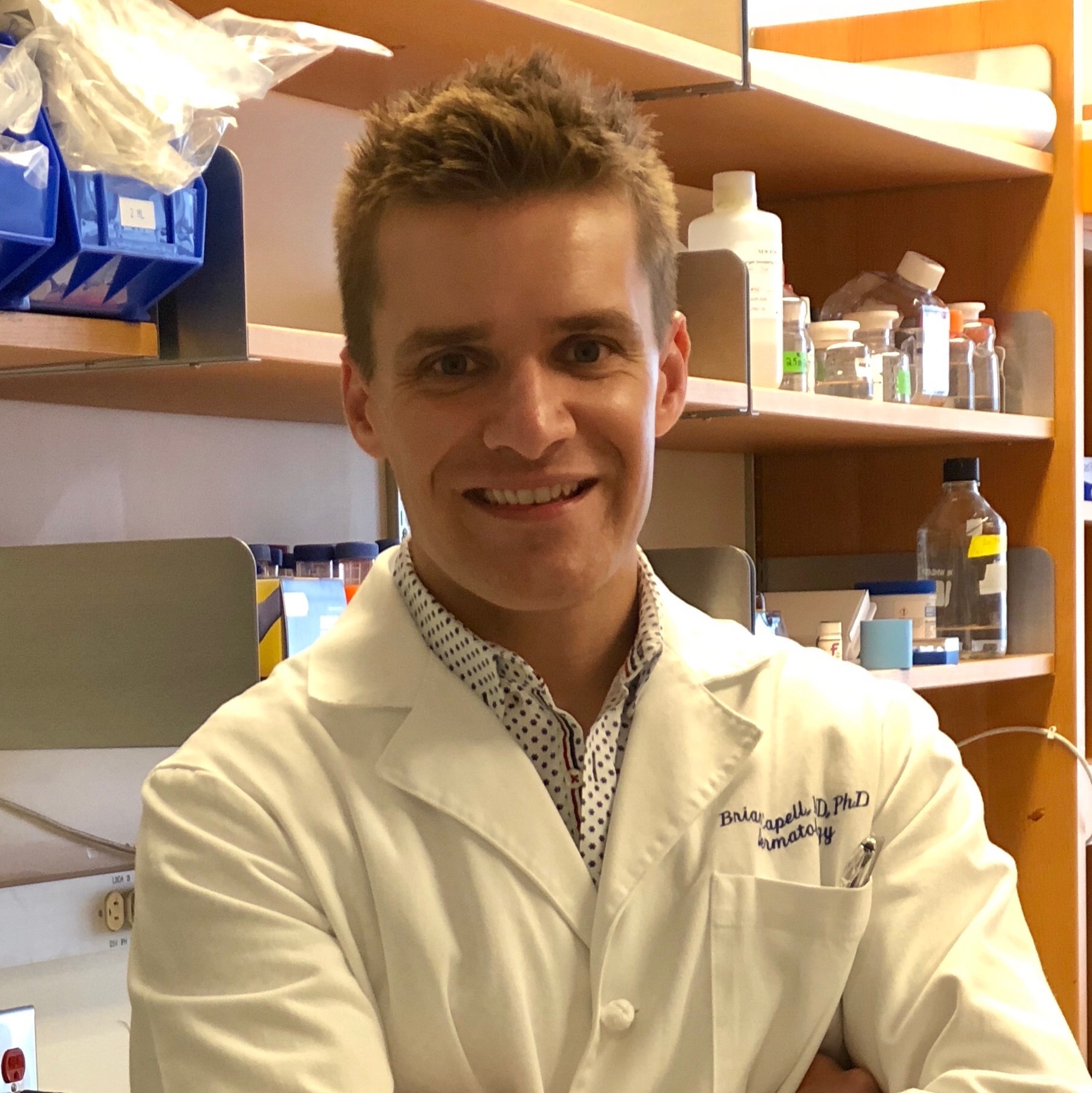
Brian C. Capell, M.D., Ph.D.
Assistant Professor of Dermatology and Genetics
Philadelphia, PA 19104
Office: 215-746-8225
capellb@pennmedicine.upenn.edu

- Demonstrated the first role for ferroptosis in epidermal differentiation and tumor suppression: Our recent studies have uncovered a potential link between the emerging form of programmed cell death known as ferroptosis and the execution of both epidermal differentiation and tumor suppression in the skin. Beyond identifying the mechanisms through which MLL4 (KMT2D) promotes differentiation and exerts its tumor suppressive functions, these studies have revealed evidence that ferroptosis may be the essential mechanism by which keratinocytes ultimately die and form the cornified envelope of the epidermal barrier. Given that numerous skin disorders are driven by dysregulated epidermal differentiation, combined with the ability to both pharmacologically induce and inhibit ferroptosis, these studies have provided proof of principal that ferroptosis modulation may a viable therapeutic strategy for a variety of skin disorders.
a. Egolf S, Zou J, Anderson A, Simpson CL, Aubert Y, Prouty S, Ge K, Seykora JT, Capell BC. MLL4 mediates differentiation and tumor suppression through ferroptosis. Sci Adv. 2021 Dec 10;7(50):eabj9141. doi: 10.1126/sciadv.abj9141. Epub 2021 Dec 10. PMID: 34890228; PMCID: PMC8664260.
Research Interest
The Capell Lab seeks to understand epigenetic gene regulatory mechanisms, how they interface with metabolism and the immune system, and how when disrupted, they may contribute to disease, and in particular, cancer. By combining the incredible accessibility of human skin with the most cutting-edge techniques, we aim to identify therapeutic vulnerabilities in cancer, and novel targets to treat disease.
Lab Members
| FIRST NAME | LAST NAME | TITLE | |
|---|---|---|---|
| Brian | Capell | PI | briancapell@gmail.com |
| Lydia | Bao | Undergraduate Researcher | lydiabao@sas.upenn.edu |
| Sohyun | Cho | Undergraduate Researcher | sohyunc@sas.upenn.edu |
| Eun Kyung | Ko | Postdoctoral Fellow | EunKyung.Ko@pennmedicine.upenn.edu |
| Nina | Kuprasertkul | MSTP Student | napasorn.kuprasertkul@pennmedicine.upenn.edu |
| Claudia | Magahis | Undergraduate Researcher | cmagahis@sas.upenn.edu |
| Alexandra | Maldonado-Lopez | G+E PhD Student | Alexandra.Maldonado-Lopez@pennmedicine.upenn.edu |
| Gina | Pacella | G+E PhD Student | Gina.Pacella@pennmedicine.upenn.edu |


